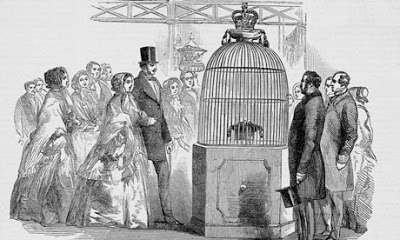List Members,
There is a chapter in the tenth canto of the Bhagavat Purana which details the activities of the Krishna Avatar in relation to the Shyamantaka Jewel. This narration confirms the existence of cavern worlds below.
Shri Krishna went out into the forest looking for the Shyamantaka Jewel because it had been robbed. He came to know that the jewel had been taken down a tunnel by a great Monkey King, Jambhavan. This supposed monkey seems to be more akin to the Almas of the Hindu Kush and, in fact, the place where all this occurred was not too far (relatively speaking) from the Hindu Kush, maybe within a couple of hundred miles from present-day Bombay.
Anyway, the narration mentions that Shri Krishna entered a tunnel leading to a subterranean world where the simian had a home which had a nursury for his child, toys and a nanny to look after him. The narration also states that Krishna was confronted by the simian king and had to engage in fighting with him, and that they jousted against each other using trees as some kind of karate-stick weapon. So the existence of subterranean forests is alluded to at the same time.
"Krsna and the citizens of Dvaraka then found in the forest a great tunnel, said to be the path to Rksa's house. Krsna knew that the inhabitants of Dvaraka would be afraid to enter the tunnel; therefore He asked them to remain outside, and He Himself entered the dark tunnel alone to find Rksa, Jambavan. After entering the tunnel, Krsna saw that the very valuable jewel known as Syamantaka had been given to the son of Rksa as a toy, and in order to take the jewel from the child, He went there and stood before him. When the nurse who was taking care of Rksa's child saw Krsna standing before her, she was afraid, thinking the valuable Syamantaka jewel might be taken away by Him. She began to cry loudly out of fear."
"There was then a great fight between Krsna and Jambavan in which they fought like two opposing vultures. Whenever there is an eatable corpse the vultures fight heartily over the prey. Krsna and Jambavan first of all began fighting with weapons, then with stones, then with big trees, then hand to hand, until at last they were hitting one another with their fists, and the blows were like the striking of thunderbolts."
The following comments confirms that Krishna had remained underground the whole time, i.e., that they didn't come to the surface to duel and use trees from the surface: "Although the fighting between Krsna and Jambavan went on for twenty-eight days, the inhabitants of Dvaraka waited outside the tunnel for twelve days, and after that they decided that something undesirable must have happened. They could not understand what had actually happened for certain, and being very sorry and tired, they had returned to the city of Dvaraka."
The whole story may be found here: http://krsnabook.com/ch56.html
Cheers!

